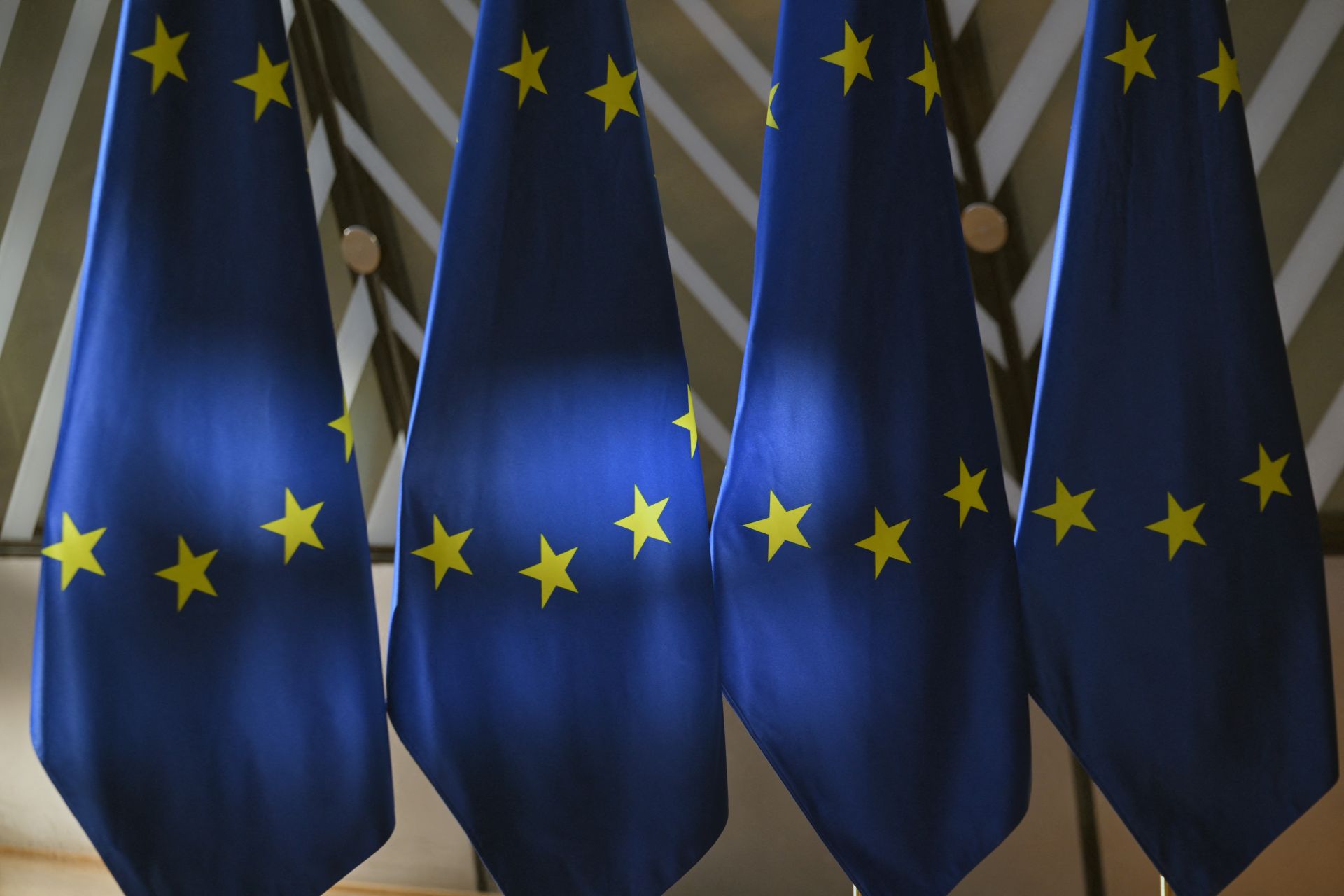- Home
- Middle East
- EU Eyes Building 'Drone Wall': Question is, What is It?

After repeated drone incursions from Russia, European Union leaders are considering a so-called “drone wall” to protect the bloc’s eastern flank. But the project is stirring debate over its true scope, funding, and implementation. While Baltic nations push for swift action, others urge a broader, more flexible system, and questions persist over whether the EU or NATO should take charge. Brussels is expected to deliver a detailed proposal within weeks. ©Nicolas Tucat / AFP
European Union leaders are discussing setting up a "drone wall" of defences after high-profile air incursions by Russia.
But the plan appears to mean different things to different countries, and not everyone seems entirely convinced.
Here's where we stand:
Eastern shield?
The first call for the project came last month from EU chief Ursula von der Leyen in the hours after a swarm of Russian drones breached Poland's airspace.
While details were scant, the initial plan appeared clearly focused on helping to shore up the EU's eastern frontier from the threat from Moscow.
Baltic states which feel themselves most directly in Moscow's firing line have already been pressing to bolster anti-drone defences.
"It is basically an anti-drone system that is able to do swift detection, interception and, of course, if necessary, neutralisation," European Commission chief Ursula von der Leyen said.
Danish lesson
Interest in the project broadened after a string of mystery drone fights over Denmark shuttered airports.
Those incidents illustrated Europe's vulnerabilities to drones even far from the bloc's eastern borders.
Denmark joined a meeting of defence ministers last week for a first round of talks on the plan.
Those wary of the project said that calling it a drone "wall" gave the impression it was only focused on the eastern flank.
"I don't really care about the name, as long as it works," said Denmark's Prime Minister Mette Frederiksen.
She said the discussion was more focused on constructing a broader "ecosystem" that could also help counter threats coming from other areas.
"Of course, it has to focus on the eastern flank, because the eastern flank is closest to Russia. But at the same time, we have this, I think general approach," she said.
Ukraine model
The EU has said it wants to work with Ukraine, which has developed deep expertise in tackling Russian drones after almost four years of war.
"We are ready to share this experience with our partners," Ukraine's President Volodymyr Zelensky said Thursday.
Ukraine has developed a wide network of sensors, and low-cost ways to take down Russian drones in a technological race with Moscow to try to outwit its enemy.
"Technology is changing so rapidly that we cannot have one idea and believe that that will solve all our problems," Frederiksen said.
Officials caution that despite the grand ambitions voiced by Brussels, there are likely to be no silver bullets that could protect the continent entirely.
"I'm sometimes wary of terms that are a bit too hasty: are there iron domes that exist for Europeans or drone walls?" said French President Emmanuel Macron.
"Things are more sophisticated, more complex in reality."
Who pays?
As ever at the EU, the question of who pays is a big one.
Financial powerhouses like Germany, which are currently looking to build up their own forces, are unwilling to foot the bill for others.
The EU has recently come up with a 150-billion-euro loan scheme that has been predominantly snapped up by countries in the east.
But some in the region say that given they are essentially shielding the rest of Europe from Russia that the effort should be a common one.
"There needs some kind of common procurement, maybe common instruments for sharing the burden with the Eastern border," Estonian Prime Minister Kristen Michal told AFP.
So far there is no concrete estimate for how much the project would cost, but the EU's defence commissioner Andrius Kubilius it should be "several billion euros, not hundreds of billions".
Why EU?
Another question being asked is why the EU should take the lead.
The 27-nation bloc has stepped up its role in trying to boost defences, but there are serious doubts about whether it is best placed to manage such a project.
Western military alliance NATO has more typically been the forum for such discussions and it remains in charge of fending off Russia.
But given doubts over US commitment to Europe under President Donald Trump, the EU has been assuming a bigger role.
What next?
After a round of discussions by EU leaders in Copenhagen this week, leaders gave the green light to carry on honing the plan.
The ball is now back in the court of von der Leyen's European Commission.
Brussels has been asked to do more homework and come back with a concrete proposal ahead of another EU leaders' meeting in Brussels in three weeks.
"That will be decision time," European Council chief Antonio Costa said.
By Max DELANY/AFP
Read more



Comments